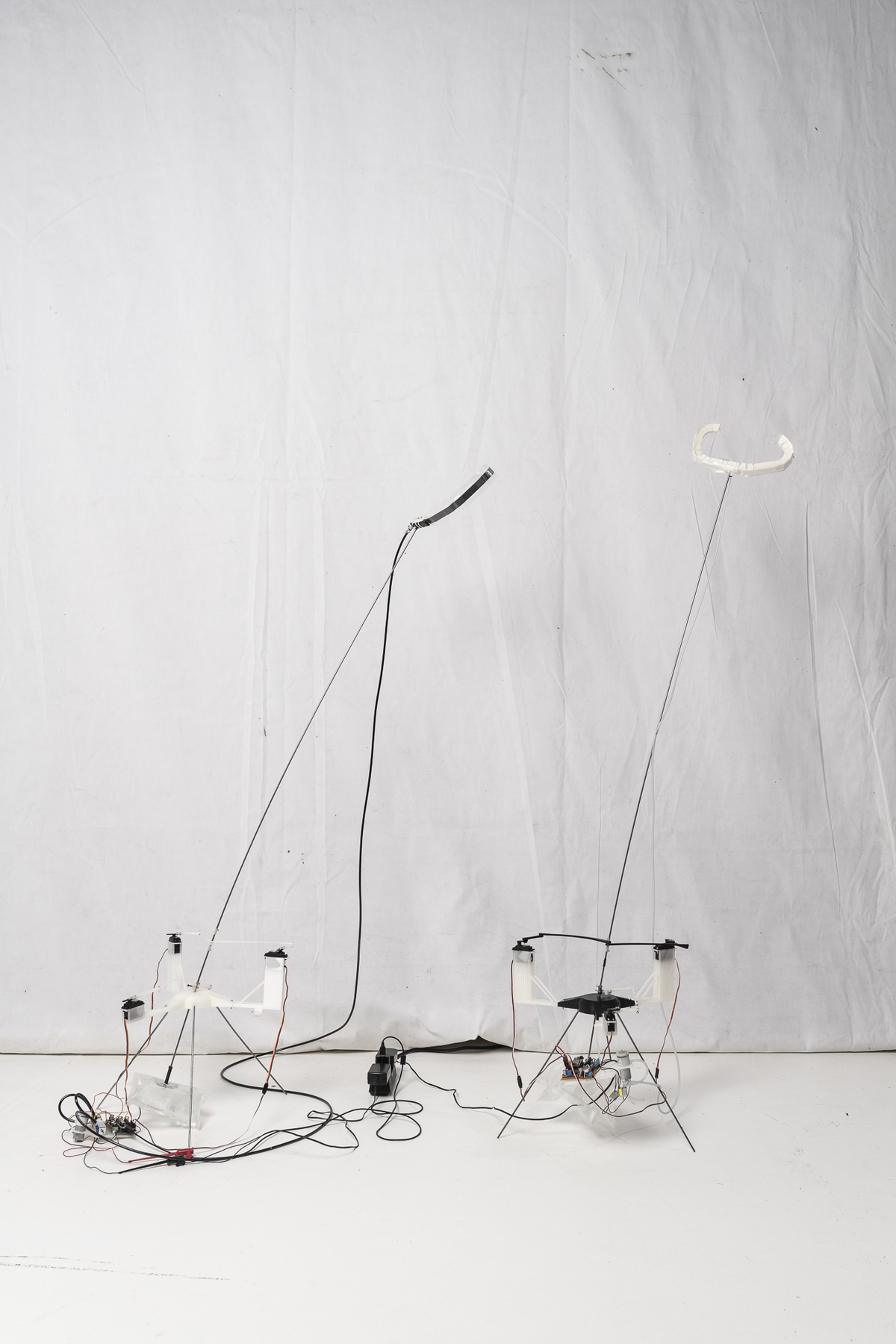Figures #3 and 4: Prickly
Two units with a slightly different design.
Figure #3 and #4 consist of a 1.5-meter 4 mm steel rod held horizontal by a 3-legged mount. This mount consists of a central disk with a small hole holding the steel rod using a clip mechanism. The central disk has three protrusions at 120 degrees angle relative to each other, each with a servo mounted at the end. These are attached to the central rod so that two of them push at the rod, causing it to tilt. One servo represents one axis, with the second pushing at a 90-degree angle to the first servo. This makes it possible to tilt the rod in any direction. A third servo is attached to a mechanism that rotates the rod around its longitudinal centre point.
At the top of the rod, there is a narrow airtight plastic bag attached. Inside there are many small blocks placed one after another. These are about two cm tall with differently angled walls and a centre hole. This means that as a vacuum pump sucks the air out of the plastic container, they will be pressed against each other at an angle that corresponds to each of these blocks' walls with the effect of the whole unit bending. How this actuator bend is determined by the combination of the different angles of the blocks it contains. This actuator (a different configuration for each of the two editions of this figure) is attached at a 90-degree angle at the top of the rod. As the rotational servo turns, this bendy actuator rotates with it.
The full range of movements of this figure is to freely tilt the steel rod in any direction. The vacuum-driven actuator at the top can contract, causing it to bend in a configuration unique to each of the two editions of this figure. Lastly, the rod can rotate, changing the direction the vacuum actuator "points".
Figures like #3 and #4 (#5, #6 , #7 and #8 also have air powered actuators) that utilize air either in the form of pressure or as a vacuum to generate movement have a pronounced sonic component. In figure #3 and #4, the actuator mounted to the top of the steel rod uses a vacuum to deform. The pump generating the vacuum creates sound with a fundamental frequency equal to its rate of rotation. Solenoid valves that are used to direct the vacuum make an audible clicking sound. Since the vacuum actuator is driven by the same type of pumps and solenoid valves as figures #5 and #6: Spines, they share many of the same sounds. The hissing of air escaping and rushing into the actuator has a different, sharper timbral quality to it, and since the actuator is made from a more brittle stiffer type of plastic, it makes a crackling sound as the plastic deforms and sticks a little to the blocks inside.
Impetus
A main motivation guiding the development of figure #3 and #4 was size. I wanted a figure approximating human size standing “upright”. I wanted to investigate what a figure of comparable size to a human observer would do to the potential for relations to form between the figures and observer. #3 and #4 are still part of the early generation of figures created as part of this research project, and still make use of low powered RC servo's as their main actuators. This creates the necessity for a careful management of balance to generate a sizeable motion and as such this figure shares some of the fragile appearance of figures #1 and #2.



